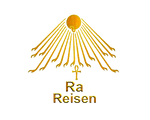Achmim is the capital of the ninth region of Upper Egypt. In ancient times, it was known as Khent-Min and during the Greek era as Panopolis. It is one of the oldest and most ancient Egyptian cities, with a history spanning over 6,000 years. The city was famous for its linen weaving.
The archaeological site of Achmim lies beneath the modern city and is one of the most significant locations. The Temple of Ramses II was uncovered here, which according to Herodotus, was surrounded by a stone wall and two massive statues. In 1981, part of the temple and a huge statue of Ramses’ daughter Meritamun were excavated. In 1991, a seated statue of Ramses II was revealed, and the area was turned into an open-air museum, although parts of it remain buried under the modern city buildings.
The statue of Meritamun, son of Ramses II, and Queen Nefertari is considered the tallest ancient statue ever found. It was reassembled in 1988. Due to its beauty, it is known as the “Bride Statue.” Made of limestone, it still shows traces of paint in red, blue, black, yellow, and brown. The artist emphasized Meritamun’s facial features, sculpting large eyes, a pointed nose, and a rounded chin. She wears a wig tied at the back with a double band adorned with an ornament featuring two snakes and a double crown, along with a choti crown on her head. The statue includes two public feathers on a circular base decorated with rows of the “Great Life” symbol and a solar disk.
The queen is adorned with jewelry including earrings, a necklace on her chest, and wide bracelets on her arms. In 2019, the Ministry of Antiquities carried out a restoration project, and within six months, the restoration team managed to re-erect the statue of Ramses II next to his daughter Meritamun’s statue.
This statue, discovered in 1981, was broken into more than 70 pieces. The largest pieces included the head without the crown, part of the neck, chest, abdomen, the royal garment, part of one knee, a fist, and several parts of the engraved back pillar. The statue is made of limestone, about 12 meters long, and weighs more than 45 tons. It depicts King Ramses II standing with his left leg forward, wearing the usual royal attire, with his titles engraved on the back pillar.
